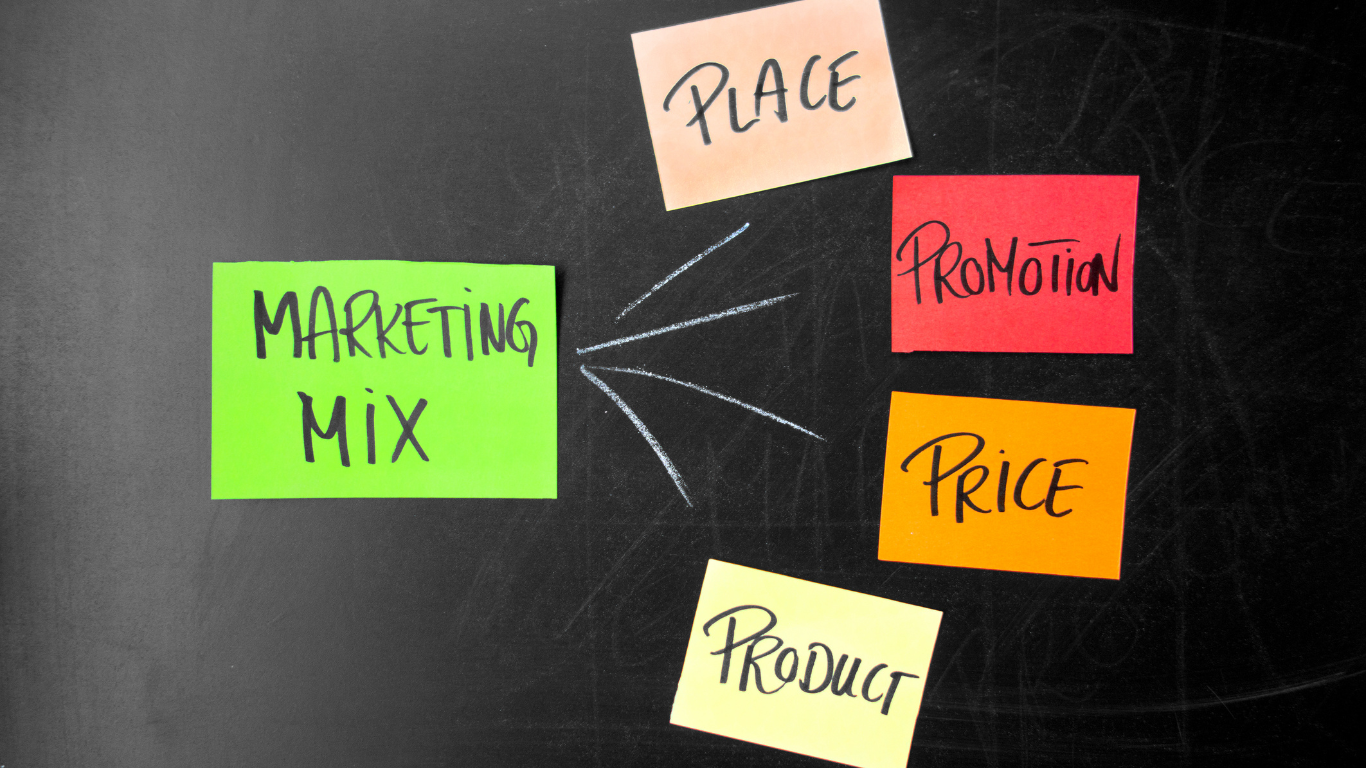The marketing mix, often referred to as the 4P’s is probably the most well-known concept in marketing. It’s the set of marketing tools that a company uses to pursue its marketing objectives in a chosen target market.
We call the elements of the marketing mix, tactical components of marketing, as they occur in your day-to-day short-term plans. The marketing mix consists of; Product, Price, Place and Promotion and all 4 elements, when balanced, offer an effective marketing tool for a variety of processes.
The extended Marketing Mix or the 7P’s as they’re more commonly known expands the number of variables from the original 4P’s model to 7. This adds Physical Evidence, Processes and People and is used in service industries and knowledge-intensive environments such as consultancy and programming.
The marketing mix consists of:
- Product – For many, a product is simply the tangible, physical entity that they may be buying or selling. You buy a new car and that’s the product.
- Price – Of all the elements of the marketing mix, the price is the one that creates the revenue, all others are costs. In theory, the price can really only be determined by the discovery of what customers perceive as the value of the item on sale.
- Place – What we mean by place is not the geographical location, it’s the methods of distribution used to get products and services to customers. The place is also defined as a channel, distribution, or intermediary. It’s the way in which goods and services are moved from the manufacturer or service provider to the user or consumer.
- Promotion – This is normally what people ‘wrongly’ perceive marketing to be all about. The promotional mix consists of various tools available to the marketer such as; advertising, sales promotions, direct marketing, e-marketing, public relations; social media, exhibitions, sponsorship, point of sale, PR, etc.
- Physical evidence – This is the element of the service mix which allows the consumer to make judgments on the organisation based on appearance and on the service that’s received.
- Processes – Procedures, mechanisms and flow of activities by which services are consumed, and how they are received by the end user, are all essential elements of process strategies.
- People – All people directly or indirectly involved in the consumption of a service are an important part of the extended marketing mix. Knowledge workers, employees, management and other consumers often add significant value to the total product or service offering.
When to use your marketing mix?
It’s not just a matter of having a brilliant product and hoping it will sell itself – and being the cheapest may not be enough either. Even with a world-beating product at just the right price, if people don’t know about it and can’t get hold of it you’ll never be able to make it a success. The use of the marketing mix will apply at various different stages of your business, but the whole mix, whether this is the core or extended mix, should be fundamental to the marketing plan.
What does it achieve?
- Helps you to focus on a more limited (and achievable) set of objectives. It then becomes much clearer which elements of the marketing mix need to be used, and hence you achieve more profitable results from your marketing budget.
- Lower risk through improved forecast accuracy.
- Improve competitive advantage through greater flexibility.
- Easily calculate the effects of specific marketing tactics across business units, channels, geographies and product lines.
- Lower marketing expenses by more frequently predicting the performance of marketing campaigns at different levels.
Key steps:
- Define your customers and markets
- Look at your business and decide which of the market mix matters most to you
- Ensure that the main components complement and support one another – this is the only proven route to long-term business success. Try asking “why” and “what if” questions to challenge your offer.
For example, ask why your target audience needs a particular feature. What if you drop your price by 5%? What if you offer more colours? Why sell through wholesalers rather than direct channels? What if you improve PR rather than rely on TV advertising? As a product moves through each life cycle then the marketing mix will change. An appropriate and individual marketing mix should be developed for each product and should always keep the target market and target segment in mind.


